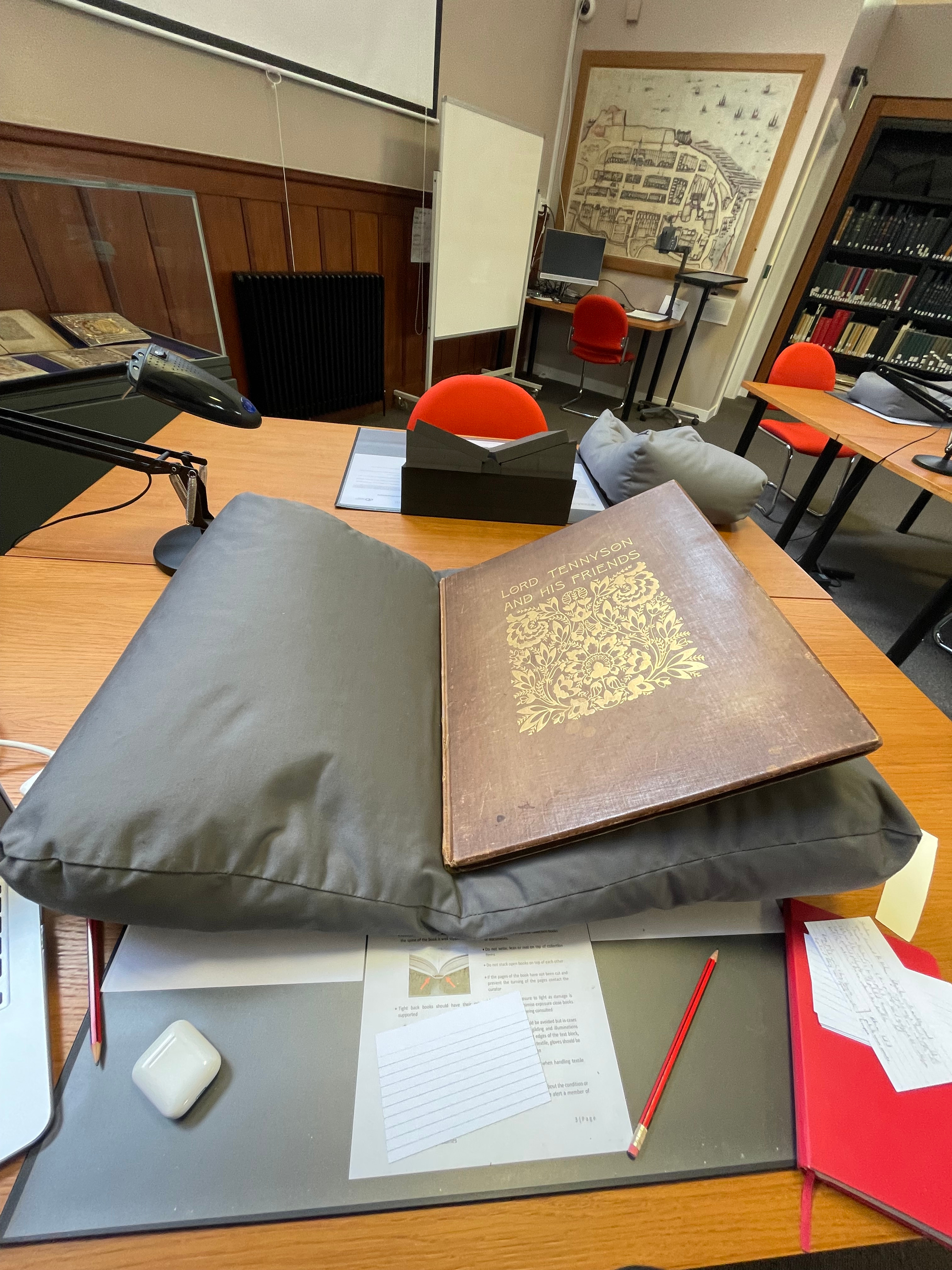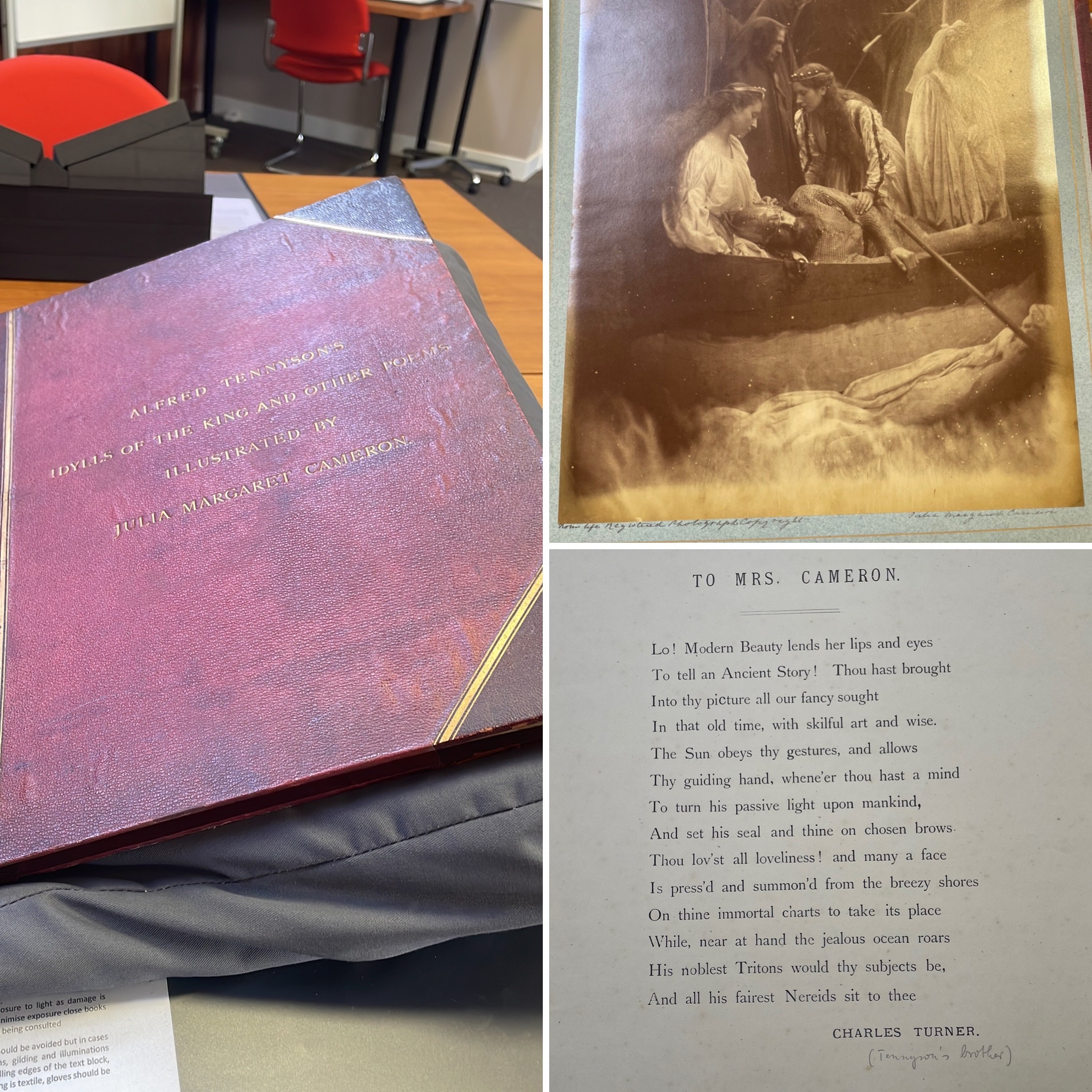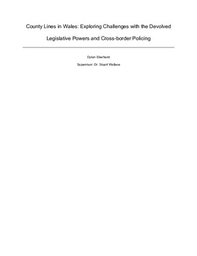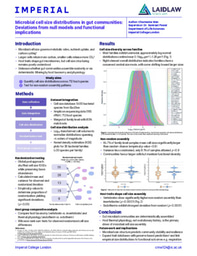Tales from the Reading Room – Laidlaw Summer 1 Blog Post

In this blog entry, I will share my exciting experience of working with items in the Napier Reading Room of the Special Collections at the University of St Andrews, a discussion which I hope will be especially informative to other scholars interested in working with similar materials.
My research project examines the collaboration between the Victorian poet Alfred Tennyson and the photographer Julia Margaret Cameron on a photographically illustrated edition of Tennyson’s Idylls of the King and other Poems (1875). Through my research, I aim to understand how this partnership challenged gender roles and tradition in the formation of Victorian artistic and literary legacies. I proposed this project knowing that St Andrews has an extensive collection of photographic materials, including an edition of Cameron and Tennyson’s Idylls. So, when I began my research period, the first thing I did was book a set of sessions in the Reading Room, emailing librarians at Special Collections to reserve several materials relevant to my studies. On my first visit, I had to fill out a few forms before thoroughly washing my hands and being given a notecard listing the items that I had booked. Anything that can damage the books, from pens to water bottles, is left in a locker. I set up my desk in the Reading Room with my laptop, a few cue cards to make notes on, and a set of pencils. If you anticipate using gloves to handle the materials, that’s unfortunately a bit of a Hollywood misconception. Very few books require wearing gloves to handle, and they can actually risk damaging the materials if worn. But apart from the practicals, nothing compares to the moment of having a book steeped in history placed in front of you for the first time, of physically turning the pages of the very materials you’ve studied.

Having the items themselves in front of you is not only an incredible experience, but I also found that this personal contact helped me to think of new interpretations of the texts and photographs. When working with the second volume of the 1875 Idylls (University of St Andrews Libraries and Museums: Photo TR652.C2E75 Vol. 2), I was inspired to interpret how Julia Margaret Cameron legitimised her identity as creator of the volume through the paratextual details of the book. Cameron compiled her two-volume set of photographs after being disappointed with how they were reproduced in the miniature ‘people’s edition’ of the Idylls, so it is evident that she foregrounded her presence and influence in this edition, published at her expense. Each photograph is inscribed by Cameron with the copyright ‘From life registered photograph copyright Julia Margaret Cameron’, not only indicating her legal possession of these images, but also alluding to the fact that she did not mechanically alter these images taken ‘from life’. Cameron was in fact one of the first photographers to copyright her works, indicating her desire to be taken seriously as a female artist and innovator in her field.

Another key aspect of the way in which Cameron legitimised her artistic identity in this edition of the Idylls is rarely mentioned in scholarship surrounding the text. This is the dedicatory poem ‘To Mrs. Cameron’, written by Charles Turner, brother of Alfred Tennyson. The poem employs Greco-Roman epic allusions and imagery to anchor Cameron in a long-standing poetic and artistic tradition, as well as assigns her almost divine powers of controlling the sun and commanding ‘many a face’ in this new modern medium of photography. Turner’s dedicatory poem characterises Cameron’s collaboration with Tennyson as that of ‘modern beauty’ being united with an ‘ancient story’, or the modern art form joined with ancient poetic tradition, both immortalising Cameron as an artist and making her the quasi-divine arbiter of the ‘immortal portraits’.





Please sign in
If you are a registered user on Laidlaw Scholars Network, please sign in